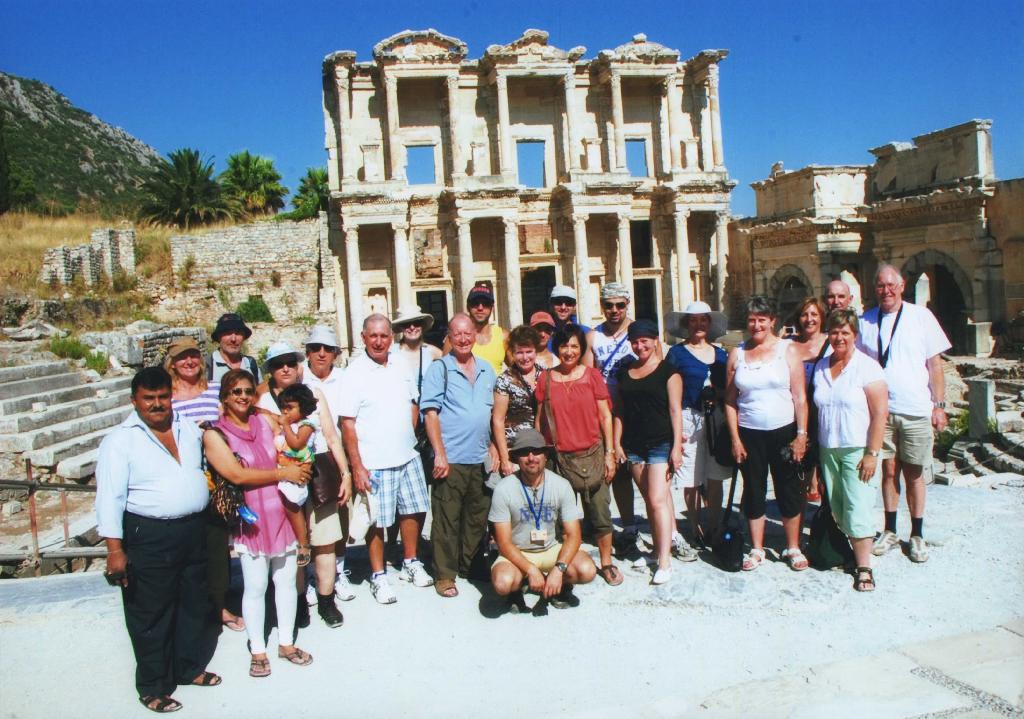Trip to Turkey July
2010
Friday 23 July To Istanbul
Welcome to Turkey!
It took quite a while to get through customs but we were then met by a representative of the travel company and transferred through the busy streets of Istanbul to our excellent hotel. After an orientation meeting with our tour director Kemal we had a brief walk around the hotel. There was immediate culture shock!
Saturday 24th July Istanbul
We did a city tour of Istanbul seeing the main historical sights. We started at 8.30am and got back to the hotel at 6.30pm, being on our feet all day in the heat. We survived quite well and revived after a swim back at the hotel.
Istanbul is Turkey's largest city with a population of 14 million. It started in the 11th century BC and was named Byzantium. The city became the "cradle of civilization" as it has such a strategic position on a narrow strip of land where Europe and Asia meet. In the 4th century it became a Roman capital and was called Constantinople after the Emperor Constantine. In 1453 it became the capital of the Ottoman empire which continued through to the time when Ataturk proclaimed Turkey an independent state after WW1.
The Old City was surrounded by a wall in Roman times under Constantine and much of it is still visible today.
The first place we visited was the sprawling Topkapi palace. This was the palace of the Emperors or Sultans during the Ottoman rule. We saw the places where they kept their jewels, sacred artifacts (including a piece of Muhammad's beard and one of his footprints; Josephs turban, and Moses rod which budded). We also saw the treasury; the court where the Council operated from, and the house where the Emperor and his harem lived. The palace is set in extensive grounds around 4 courtyards and is nicely situated overlooking the Bosphorus Sea.

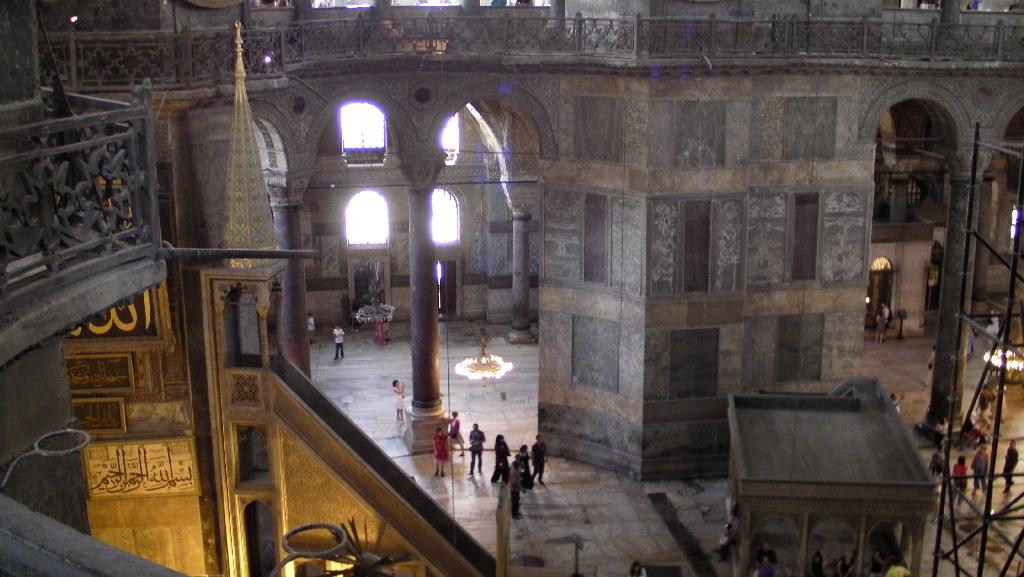
We then saw some monuments dating back to Roman times that were in the old hippodrome.
Next stop was the Blue mosque built for the Emperors. It isn't blue. As an imperial mosque it could have more than one minaret so they gave it 6. This offended the Arabs in Mecca so they added another to the mosque in Saudi Arabia. Again it is an enormous building and it was interesting to see the Moslems praying there. The women have a separate part from the men in which to pray.
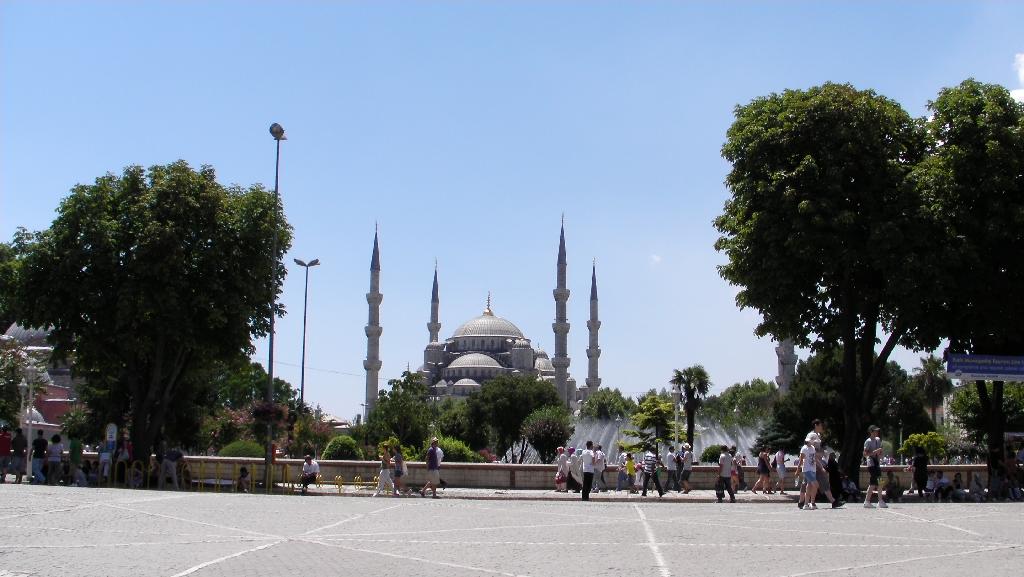
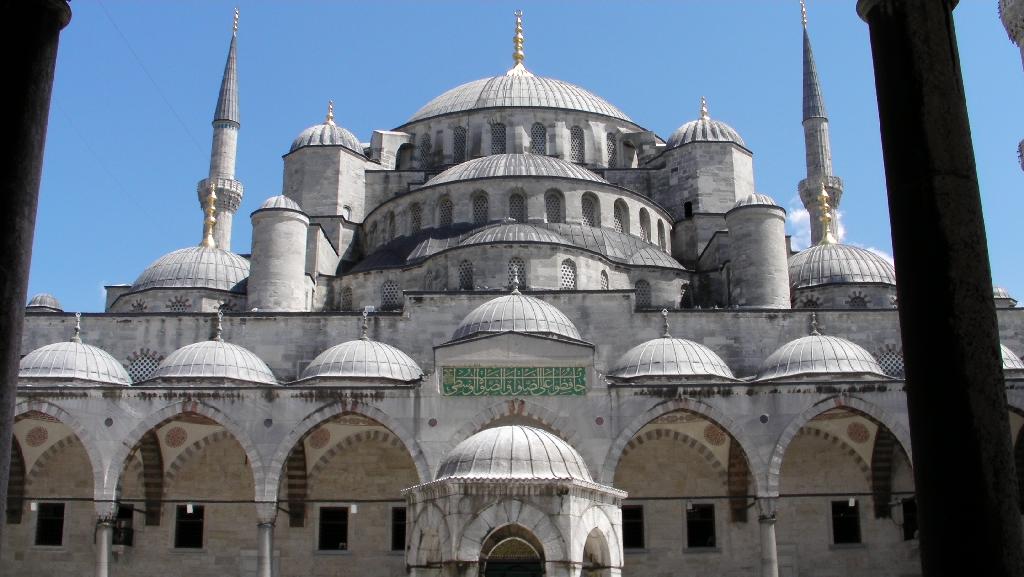
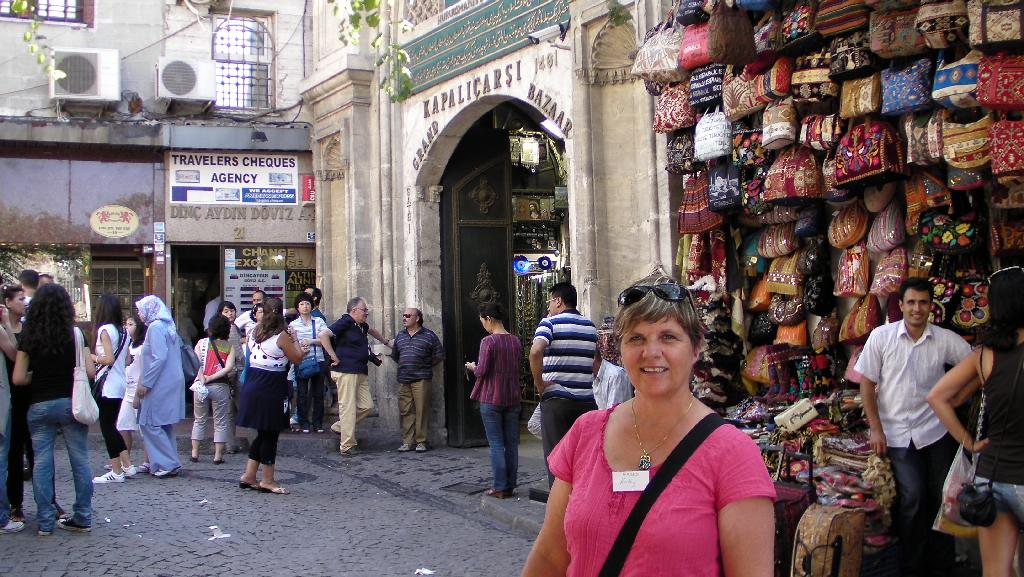
Our final stop was at the Grand Bazaar. It is a complex of about 4500 market type shops. It was packed with people and you could buy just about anything there including Turkish rugs and local jewellery. There were also ports of clothing shops selling 'genuine' name brand clothes 'very cheap'.
Sunday 25 July To Cappadocia via Ankara
This was a very long day in the bus, over 13 hours.
When Ataturk took power he moved the capital from Istanbul to Ankara because it was more central, less vulnerable to attack and because Istanbul was occupied after WW1. In 1923 Ataturk declared Turkey a republic. Ataturk means 'father of Turks' and he was the first president. No-one else can have this name and every town has a street named in his honour. In today's politics the Prime Minister has the power but the President can veto. Turkey now wants to be part of the EEC.
Ankara is the second largest city with a population of 4.5 million. In addition to being the capital, it is noted as an education centre and for its angora wool. In Ankara we had a look around the mausoleum of Ataturk. He was a general in the army and fought against the British in WW1. Afterwards he led the Turks to victory in the war of independence from the Greeks. In 1923 he proclaimed Turkey as a Republic and introduced many forward
thinking reforms. These included Turkey being a secular state, writing in roman letters, no longer being under the power of the Muslim caliphs, and freedoms for women. Ataturk is highly revered and thousands come each day to honour him.

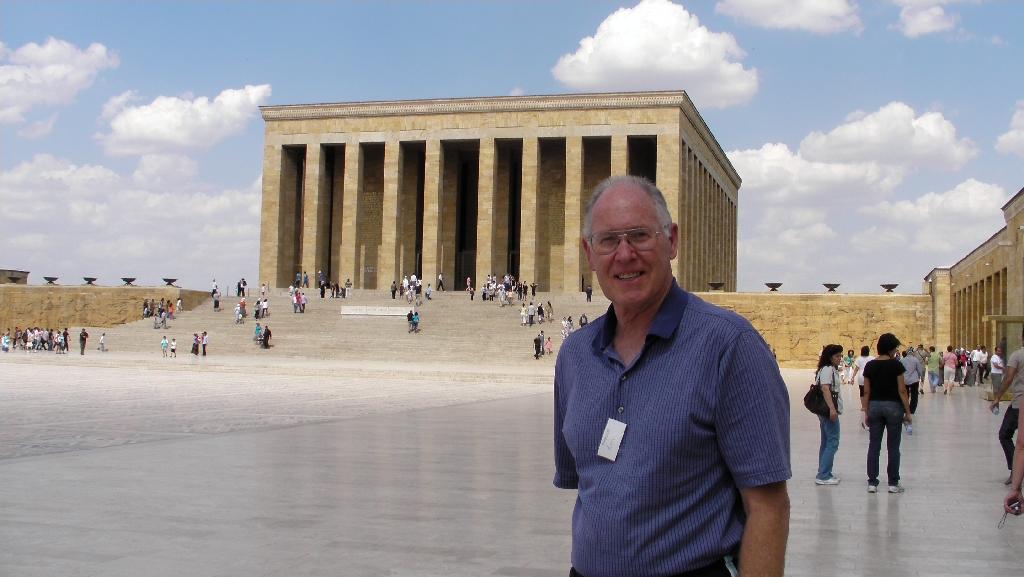
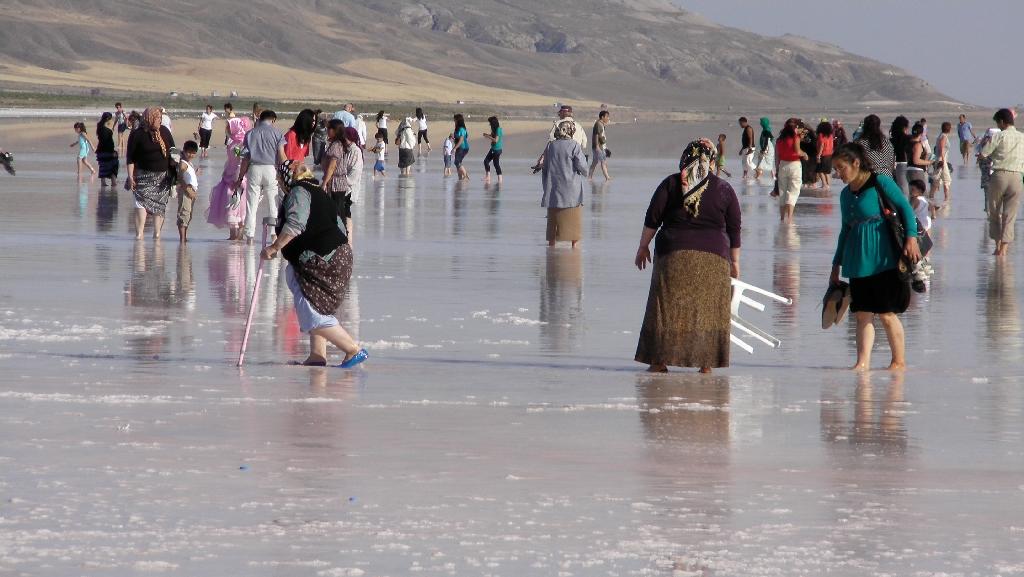
We then headed south and passed the Salt Lake, the second biggest lake in Turkey. Lots of people gathered to test the salty waters. Then it was on via the Silk Road to Cappadocia, a mountainous region bounded by the lake and two large volcanoes. In the centuries before Christ various civilizations inhabited this area, mainly Persians and Hittites.
We were pretty overawed when we arrived in Goreme and settled into our hotel. We found ourselves in an amazing landscape!
Monday 26 July Cappadocia
Cappadocia is famous for its hot air balloons and many in our group got up early and took a balloon ride over the incredible landscape.
Cappadocia was an important area in early Christianity. Paul visited here
establishing churches and then returned to encourage the new believers.
Peter mentioned the believers in his first epistle. (1 Peter 1:1)
We visited the Goreme monastery which dates back to the 3rd century. There had obviously been lots of developments in the church from when it was started till then including the creation of churches and a monastery. Saint Gregory and Saint George came from this area and are especially venerated. (They founded the Gregorian and Georgian streams of Christianity). The monastery contains many churches, chapels and rooms carved out of the soft volcanic rocks. Some of the churches are underground. After Christianity was legitimized by Constantine in
the early 300s monks and other Christians lived in communities here. Initial decorations in the churches were simple but when Byzantium became the centre of the Eastern Orthodox church frescos were allowed depicting Christ, saints and Bible stories. The frescos always included Constantine and Helena in recognition of the freedoms they brought to the early Christians.
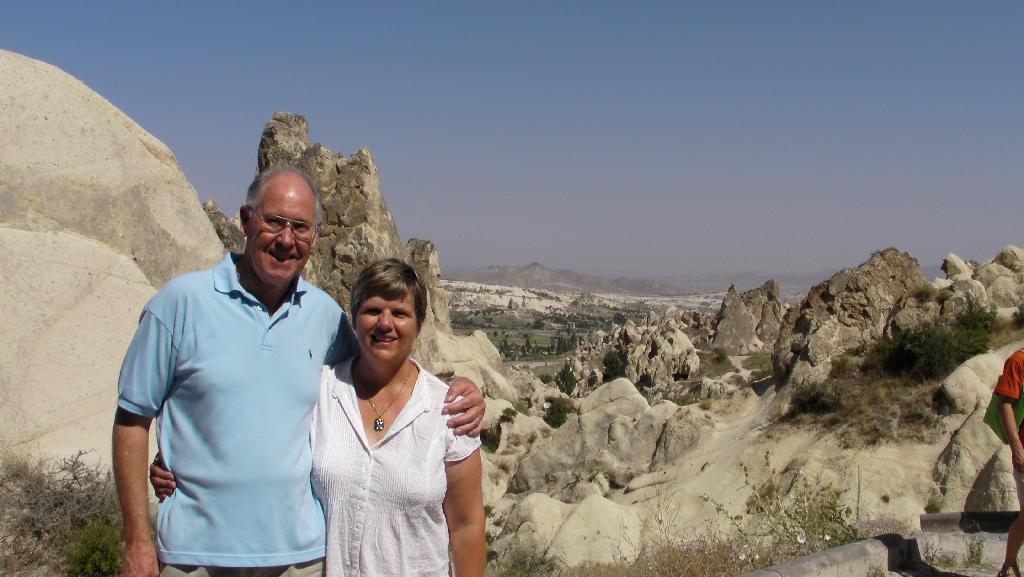
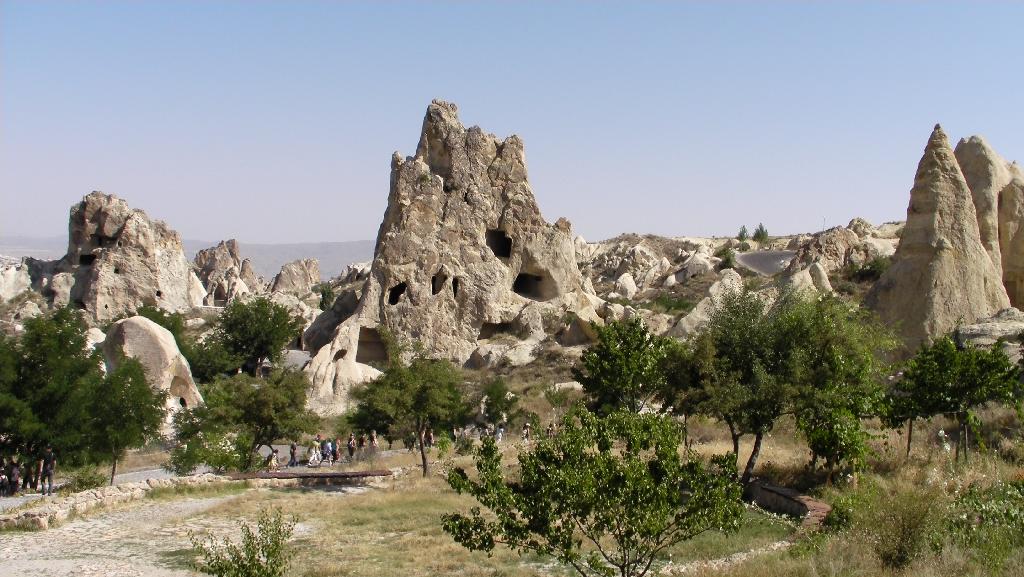
We then went to the highest point of Cappadocia
overlooking the villages and their amazing houses built into the fairy chimney
cones.They are quite stunning set in the midst of the strange moon-like
environment. Some of the cones have caps on them because they are made of
rocks from different volcanic eruptions. In pigeon valley we saw many of the cones or
rocks with pigeon coops cut into them. This was because the early Christians kept pigeons so they could have a supply of fertilizer. We also visited a
couple of factories and shops. In the first one they make turquoise jewellery -
the best in the world (turquoise means Turkish stone). The other one was for hand
painted pottery using white and red clay. The designs are intricate and
beautiful and many date back to Hittite times. The towns are a mixture of Greek and
Turkish because there was an exchange of Greeks and Turks that took 40 years after the start of the republic.

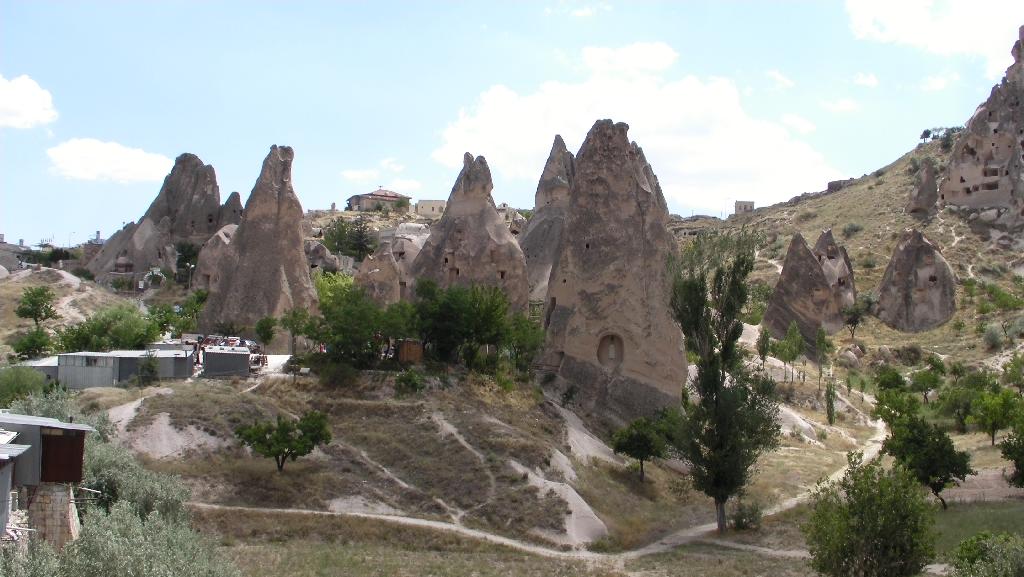


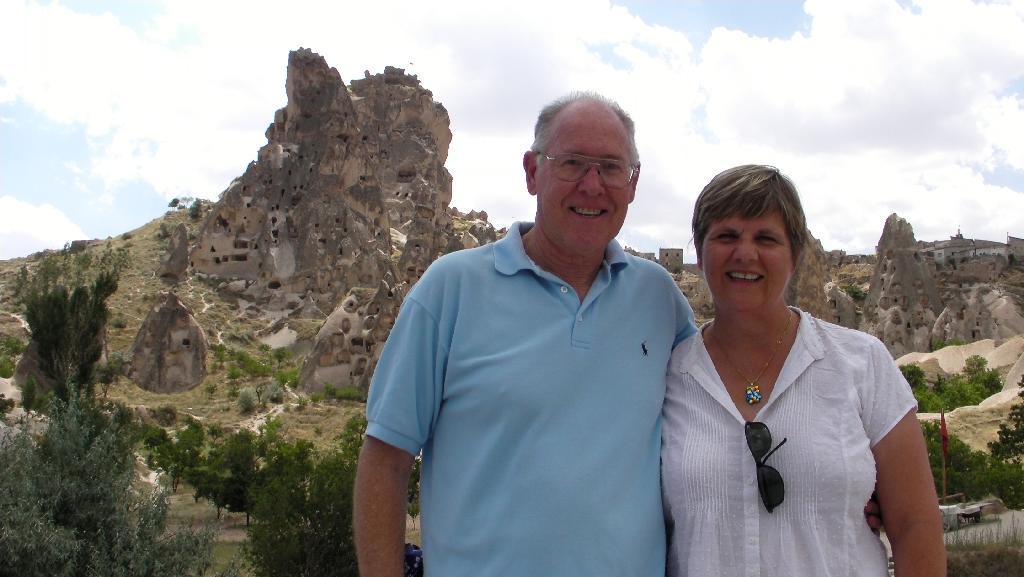
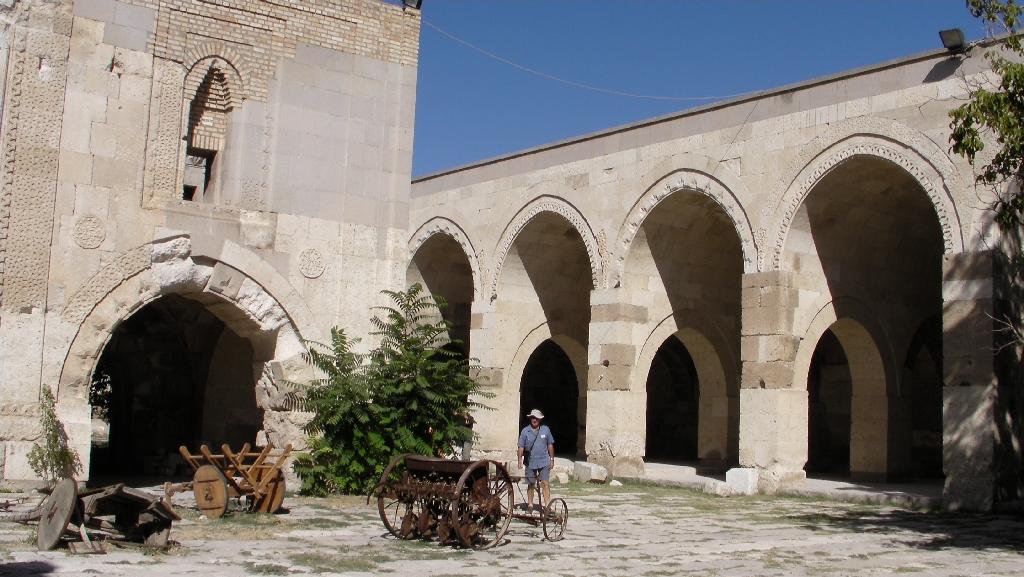
Tuesday 27 July To Pamukkale
Another long day in the bus. We traveled west along the Silk Road and were amazed at the number of petrol stations along the road. We stopped at a caravanserai, a 'hotel' or 'caravan park' for the Turkish tribes who migrated from Asia from the 11th century. (They defeated the Byzantines and set up the Ottoman dynasty in Turkey).
We visited the Goreme monastery which dates back to the 3rd century. There had obviously been lots of developments in the church from when it was started till then including the creation of churches and a monastery. Saint Gregory and Saint George came from this area and are especially venerated. (They founded the Gregorian and Georgian streams of Christianity). The monastery contains many churches, chapels and rooms carved out of the soft volcanic rocks. Some of the churches are underground. After Christianity was legitimized by Constantine in
the early 300s monks and other Christians lived in communities here. Initial decorations in the churches were simple but when Byzantium became the centre of the Eastern Orthodox church frescos were allowed depicting Christ, saints and Bible stories. The frescos always included Constantine and Helena in recognition of the freedoms they brought to the early Christians.







We then visited an underground city
with 8 stories. There are about 1200 of these cities in Cappadocia. They were
built to protect the people when the Arabs started attacking the Christian
communities from 800AD on. The underground city was incredible with countless
rooms and facilities for all aspects of life: chapel, kitchen, winery,
ventilation, storag etc. The city held about 20,000 people at a time. The
ingenuity of past civilizations is amazing.
This was yet another long and
demanding day, especially as the temperature was 38C. We recovered quickly,
though, with a swim in the pool. So far this tour has been easily the most
demanding of any tour we have ever done but we have certainly seen some amazing
sights.

Tuesday 27 July To Pamukkale
Another long day in the bus. We traveled west along the Silk Road and were amazed at the number of petrol stations along the road. We stopped at a caravanserai, a 'hotel' or 'caravan park' for the Turkish tribes who migrated from Asia from the 11th century. (They defeated the Byzantines and set up the Ottoman dynasty in Turkey).
In Konya we saw the mausoleum and museum for Mevlana who set up the sect of the whirling dervishes. The sect is focused on love of God not fear of God but was banned when Ataturk came to power. They whirl to get closer to God! Konya was called Iconium in Bible times. The apostle Paul preached here and it caused an uproar. (Acts 14).
We finally made it to the Colossea Spa Hotel in Pamukkale along with countless other tour buses.
Wednesday 28 July Hierapolis to Kusadasi
Our first stop was Hierapolis, near Pamukkale. Hierapolis was an old Roman city and another place where there was an early Christian Church. Colossae was nearby and gradually declined in favour of Hierapolis. Paul wrote Colossians to this church. We saw the limestone terraces (travertines) which have been laid down by the flow of thermal spring water. It looks like snow. Hierapolis is built above and around the terraces and became a centre because people came for the healing properties of the springs. Hierapolis was established in the 3rd century BC and reflects the typical Roman style with gates, an agora (marketplace), baths, temple, necropolis ((cemetery), amphitheatre etc. In the 5th century the Byzantines built churches over many of the sites. The city was fortified by an 8km wall incorporating the terraces. The city was destroyed by the big earthquake in 737AD and was abandoned. About 10,000 people lived here including strong Jewish and Christian communities. Philip the evangelist preached at the amphitheater and the Jews were incensed by his message. They took him outside and stoned him. His tomb is on a hill overlooking the city. Like all old Roman cities in this area it has been ravaged by time, by the big earthquake, by the Byzantines pulling down buildings to make churches and by the Crusaders pulling it apart seeking treasures. Still it was great to see evidence well of an ancient city.

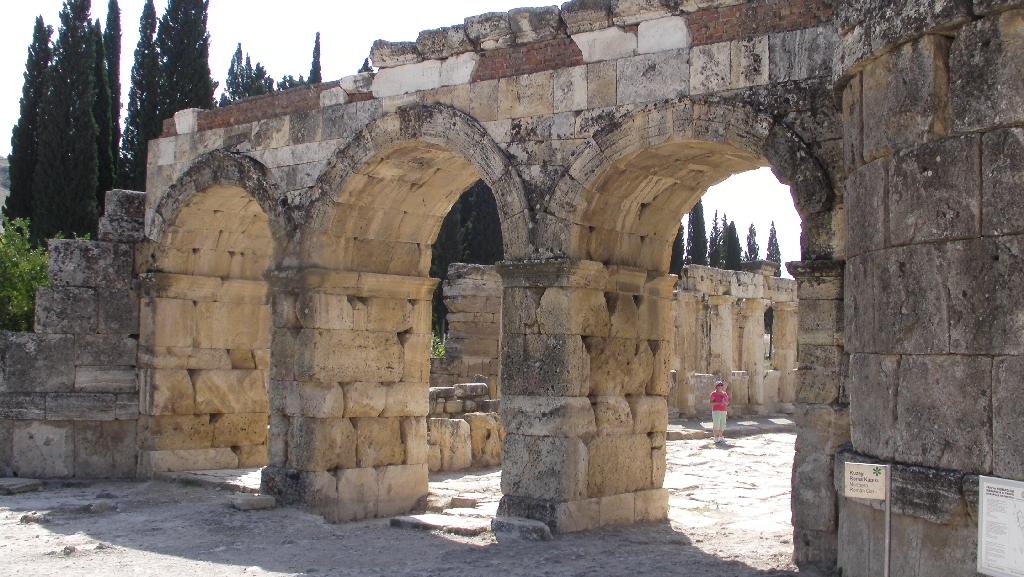
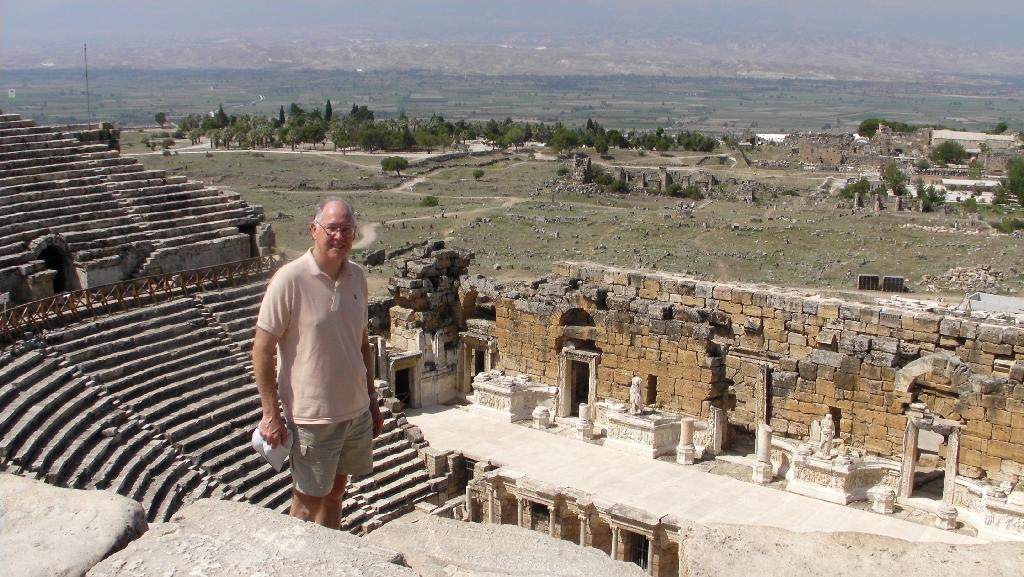

On our way to Kusadasi we stopped at a leather factory and saw a fashion parade of their beautiful soft leather clothes. We then stopped at the Temple of Artemis (Diana) - one of the 7 wonders of the ancient world. It was built in 550BC and there is little there because the ruins were sold to the British Museum. The temple was devastated and rebuilt three times including in 401AD when Chrysostom destroyed it because it was a pagan temple. Artemis was the goddess of the Ephesians.
This was another long day in the heat but we perked up after a swim in the pool.
Thursday 29 July Ephesus
Today we visited the ruins of the ancient city of Ephesus. The apostle Paul visited here three times and he wrote the book of Ephesians to the church that was established here. See Acts 19.
Ephesus was first settled in the 10th century BC by the Greeks. It was one of their Ionic cities and was situated on the site of an old neolithic Hittite settlement.Lysimachos, one of Alexander the Great's generals moved it to the present site in the 4th century BC. It was the 4th biggest Roman city with a population of 400,000 at its peak.
We saw the audion which was for musical performances (and Kathy sang there). Next was the praetenium where they did their sacrifices; the medical centre, and the temple and square built by Domitian. (He was the first Roman emperor to proclaim himself a god). After the gate of Hercules we saw Marble St, the busiest street in the city. Next was the magnificent library of Celsus; the baths; the temple for Hadrian; the latrines where they socialized!; the red light district, the agora and the 24,000 seat amphitheater. Paul preached in the amphitheater and the whole city heard the Word of God. He stayed for some months but the silversmiths who created images of Diana got upset and the city was in an uproar. See Acts 19. Ephesus is one of the 7 churches of Revelation and was told not to lose their first love. (Revelation 2). It was great to visit a city that has been so important in history and that holds such a prominent place in the Bible.
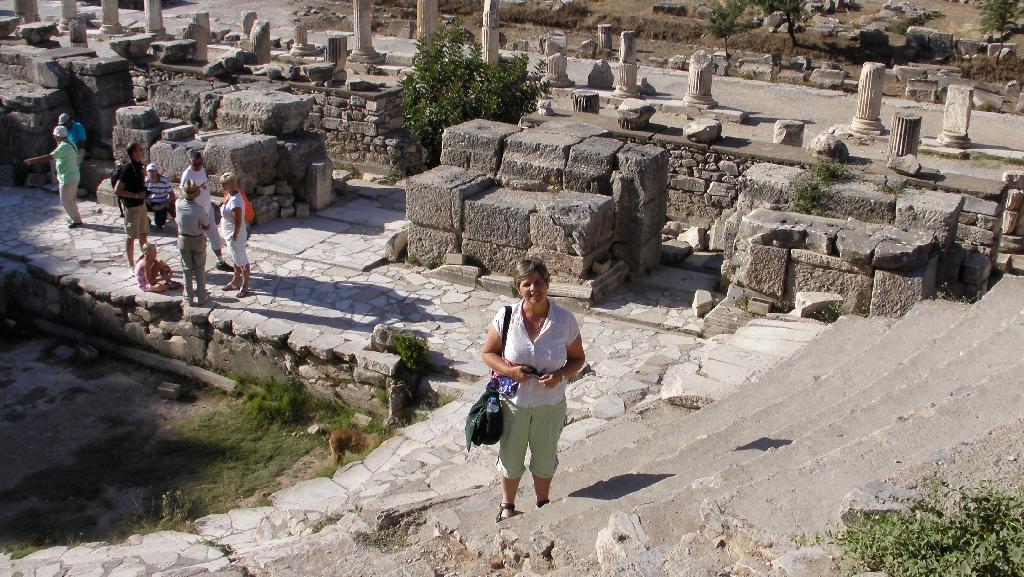
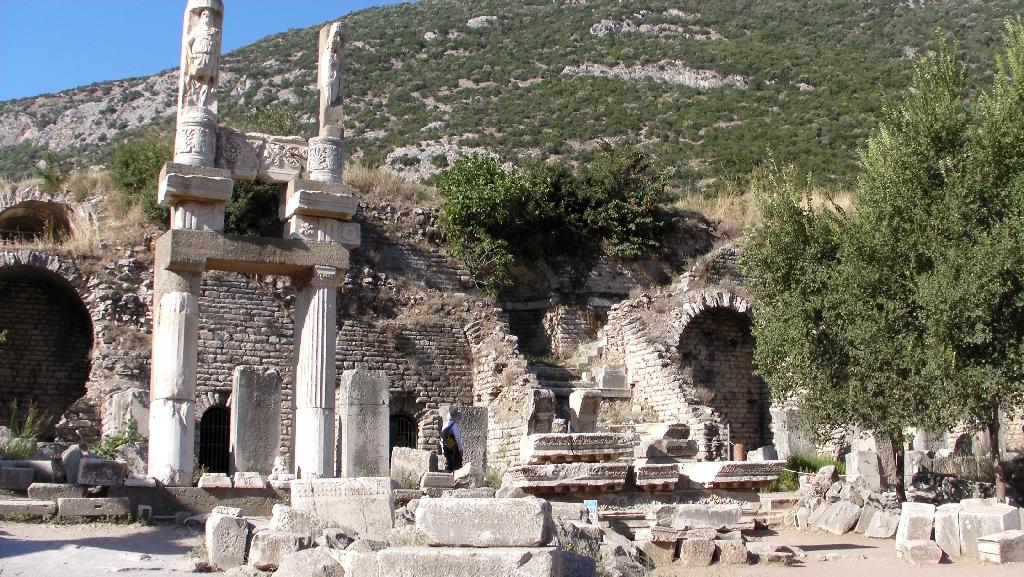
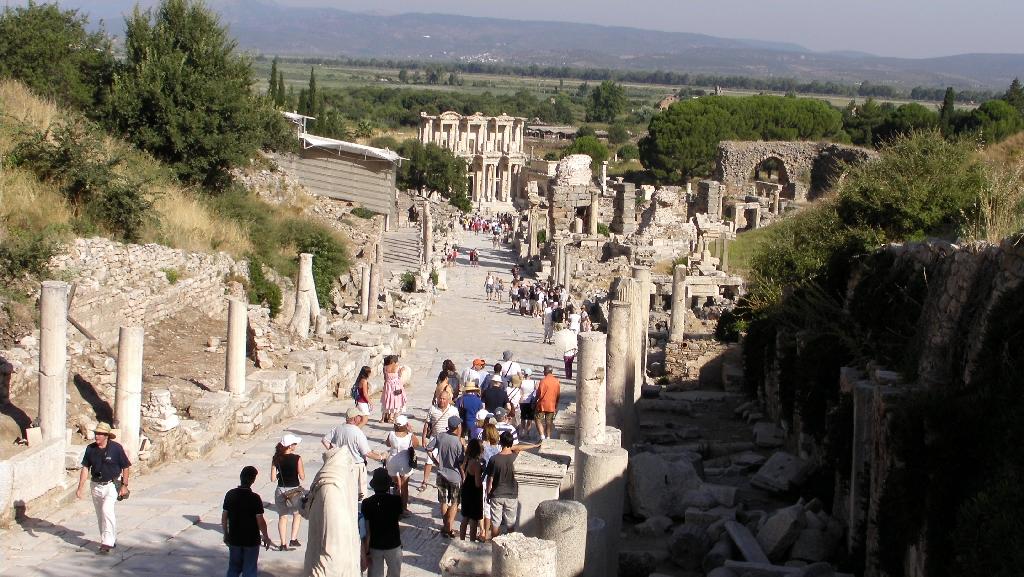

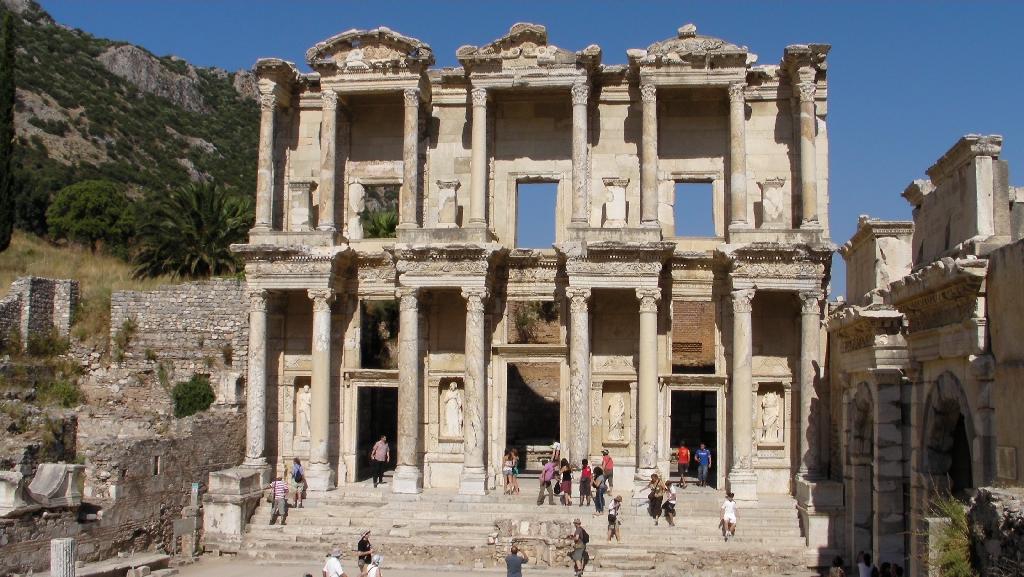
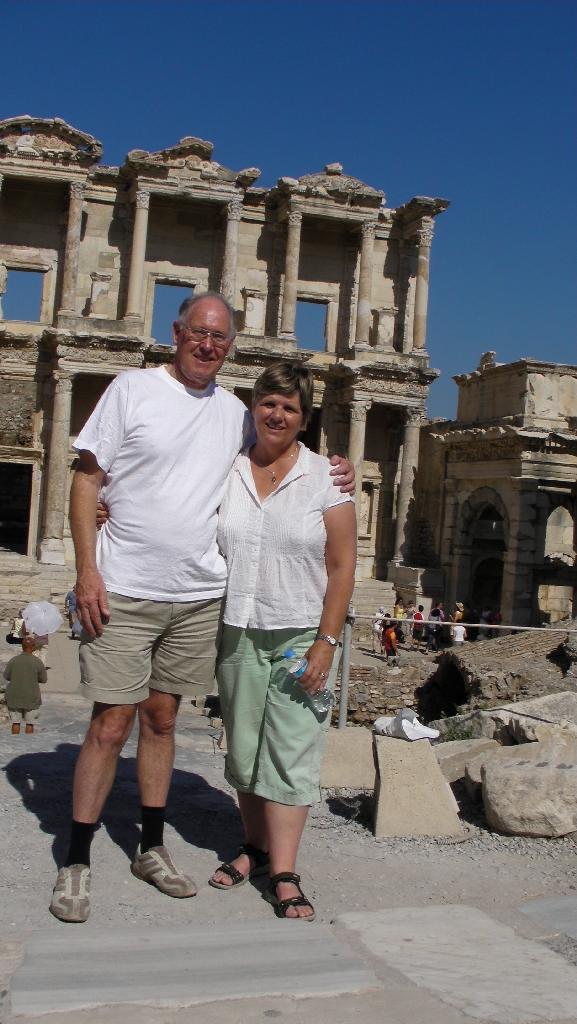
Next we visited a factory where they make Turkish rugs. (Most rugs are now made in China!). They are handmade in wool, silk and cotton. The designs are beautiful but the sales pressure to buy was unpleasant.
We then visited the house where Mary the mother of Jesus lived and where she is supposed to be buried. Orthodox tradition says that John brought her to Ephesus after Jesus' death on the Cross to protect her. This was confirmed by two Councils on Ephesus in the 400s. The little stone house is a chapel and a place of pilgrimage for Catholics. John lived in Ephesus till he was exiled to Patmos, just off the coast from here, and he died there. He is buried in Seljuk and there is a castle and church there in memory of him. Beside it is fortress built to protect against the Crusaders.
Friday 30 July to Canakkale

We traveled north up the Aegean coast. Along the way we passed through Ismir (Smyrna) and Pergamum, two more of the 7 churches of Revelation. (All are located in the western region of Turkey. John, who wrote the letters to these churches was exiled to Patmos, in the Aegean Sea just off the coast. In Seljuk we saw the place where he was buried). In Ismir (Smyrna) Polycarp was martyred and John wrote to the church to be faithful in persecution.
In Bergama (Pergamum) we saw the Acropolis (meaning high city) set on a big hill. The church in Pergamum was told not to sacrifice in the temple of Zeus, because it was the house of Satan. They were to repent of their evil ways and turn back to the Lord Jesus Christ. In the Acropolis we saw this temple and the big temple for the Roman Emperor Trajan which was finished by Hadrian in the 3rd century. It is amazing how they could build such big structures on top of such a massive hill. Pergamum had the biggest library in the world - about 200,000
items. They wouldn't return papyrus books that had been lent by Egypt to build up the collection. Egypt then stopped lending to them so they invented parchment which was made of lambskin, and continued creating books. Mark Antony gave many of the books to Cleopatra as a gift and, later, when the Muslims came to power all not sympathetic to them were destroyed.


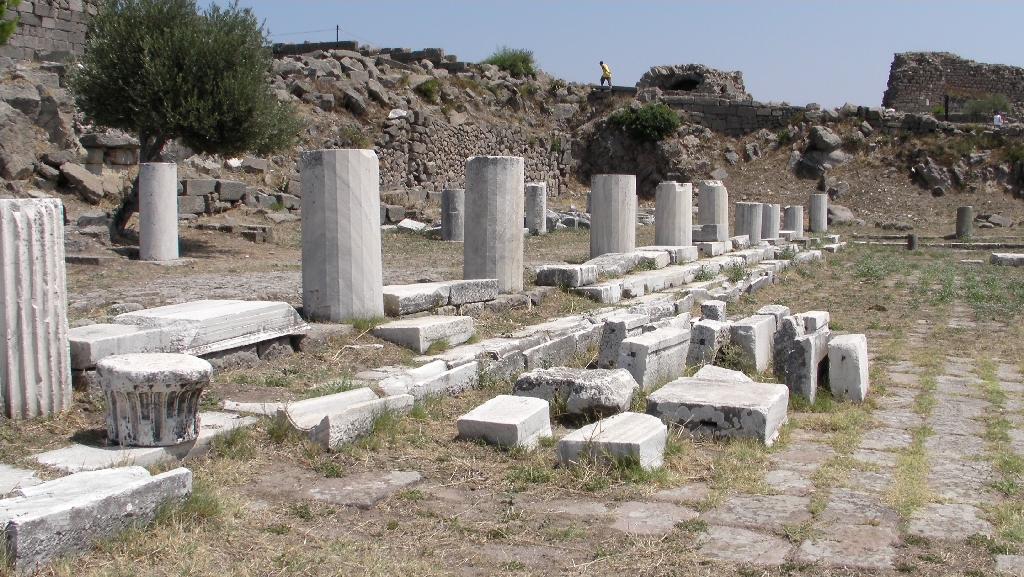
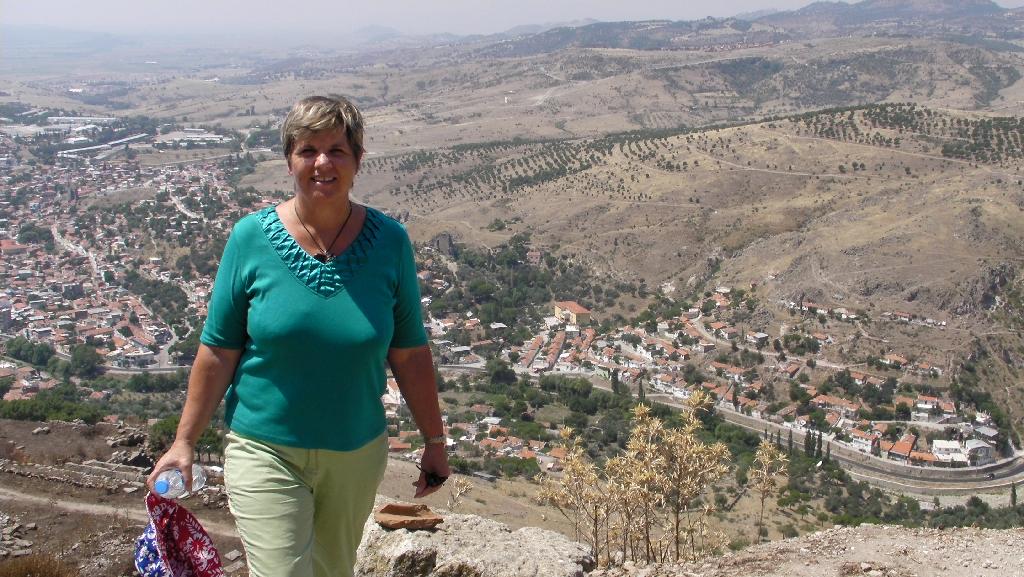
As we traveled north up the Aegean coast it was very beautiful with many resorts, lovely beaches and a nice climate. On the way we crossed the Ida mountains where mythology says the nymphs came from. This is also the area where the legend of Echo and Narcissus took place. Narcissus saw his image in a lake and loved himself so much he fell in and drowned. Echo screamed and so we get the term 'echo'. A flower sprang up where Narcissus was buried: the narcissus.
Another legend concerned a wedding feast where Paris had to judge who was the fairest of all. She had a golden apple and 3 goddesses Athena, Hera, and Aphrodite wanted it. Paris gave apple to Aphrodite who later helped kidnap Helen of Greece. The Greeks declared war on the Trojans to get her back. Achilles from Greece led the attack and was continually thwarted by the Trojan Hector. Athena taught the Greeks a trick that enabled them to overcome the Trojans. They declared a fake peace and sent a present of a wooden horse - but it was full of soldiers. The horse was allowed into Troy and the soldiers emerged from it while the Trojan soldiers were drunk at night and conquered
the city. They never found Helen. This story is from Homer's Iliad, and led to the statement "never trust Greeks bearing gifts." Greeks and Turks still don't like each other although relationships are improving now that the 40 years of transferring of populations has been completed. Greece is even supporting Turkey's entrance to the EEC.
There were not many well preserved ruins in Troy. We saw how there had been 9 layers showing the different civilizations, one built upon the other. Troy had a strategic position controlling the entrance to the Dardanelles. It was destroyed by fire war and earthquake and rebuilt 9 times. It was inhabited till the 5th century AD.
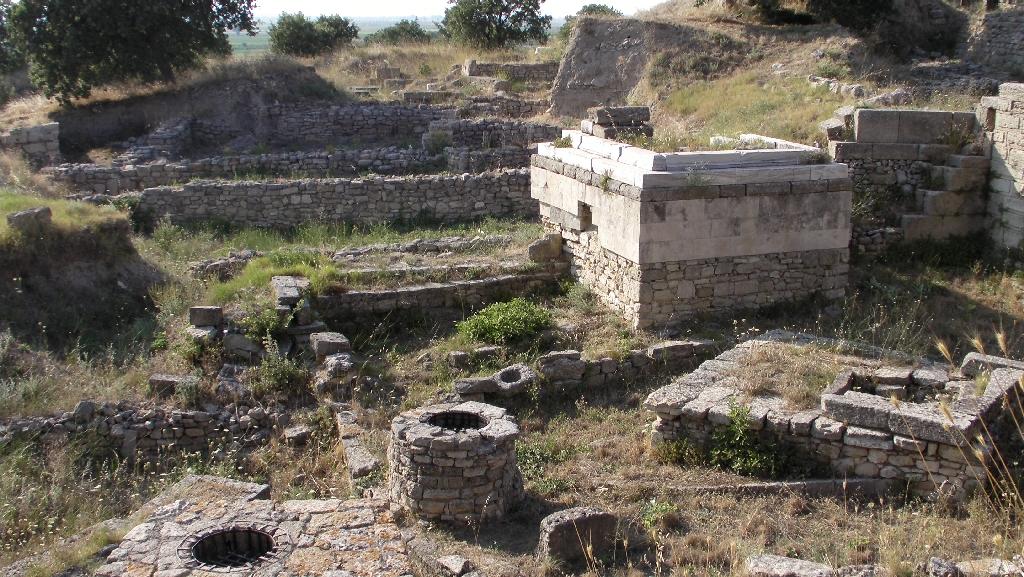


Saturday 31 July to Istanbul via Gallipoli
We left our lovely resort in Cannakale and ferried across the Dardanelles to the European side of Turkey to visit Gallipoli.
Here is the background for the terrible events that happened at Gallipoli. The Turkish Ottomans allied with Germany in WW1 in 1915. On the 17 March the British and French attacked the Turks on the Aegean coast expecting an easy victory. They were repulsed but with great loss of life. 500,000 died on both sides. The British retrenched and decided on a landing on the western shore on the Gallipoli peninsular. On the 25 April the Anzac forces landed at Anzac cove but the Turkish leader Mustapha Kamel (Ataturk) was prepared for them. The Anzacs met steep cliffs with the Turks well dug in in trenches. Many died in the landing and 8700 Australians and 2700 NZers in the campaign. (Kathy's grandfather lost his arm). The siege at Gallipoli took 8 months with much hand to hand fighting in the trenches. The British/Anzac troops then moved back and withdrew.
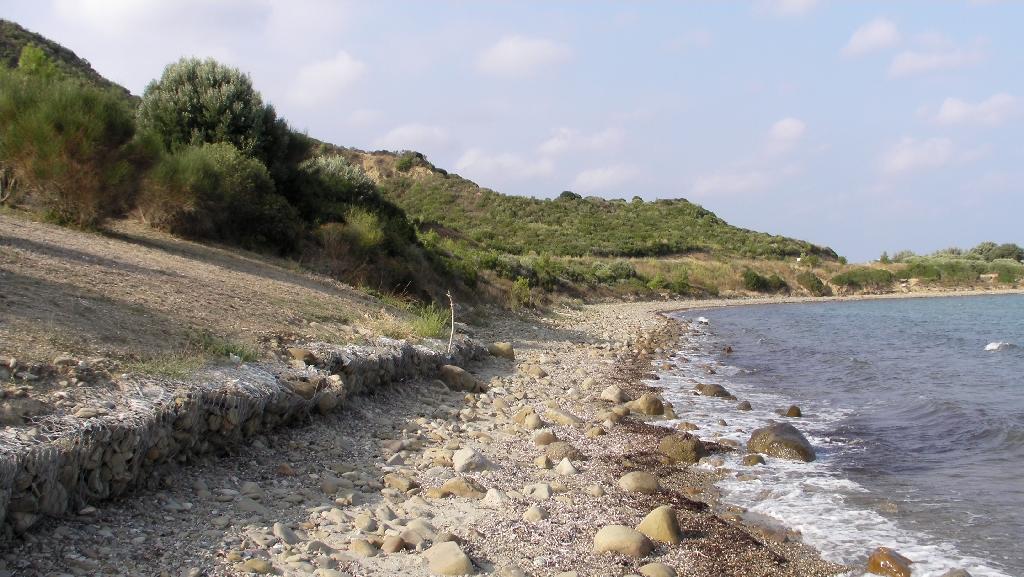
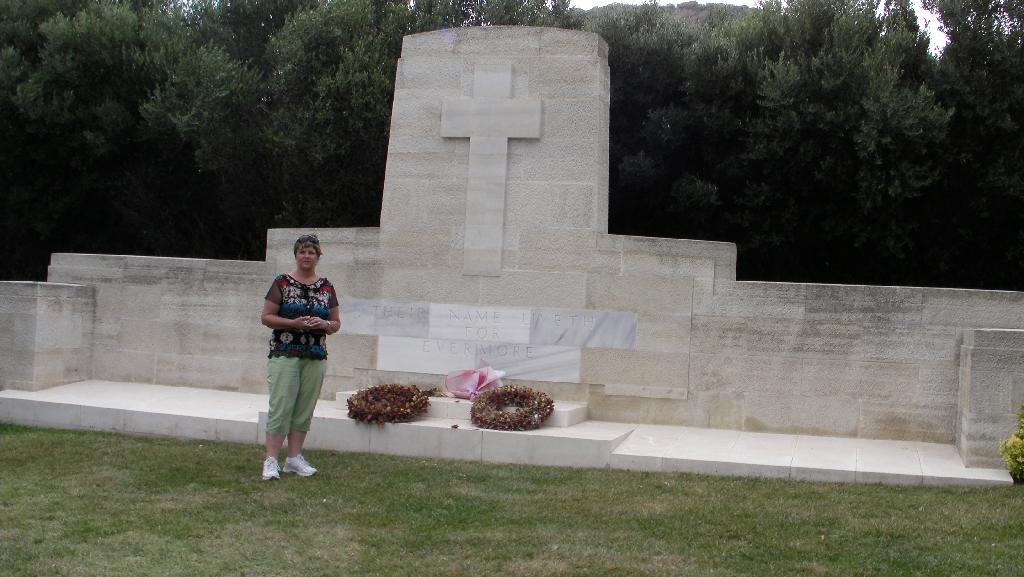
We visited Anzac Cove and saw the various cemeteries where Australian and New Zealand forces are buried. We also visited the Lone Pine memorial where the Anzac commemoration service is held each year. Much hand to hand fighting took place around there and it was the site of a brief truce when troops of both sides worked together to clean the battle field. We also saw the Turkish and NZ memorials. There are still lots of the trenches present in the hills. Ataturk reckoned that fighting in these trenches was certain death because the trenches were so close together. It was sobering to visit Gallipoli but important "lest we forget".
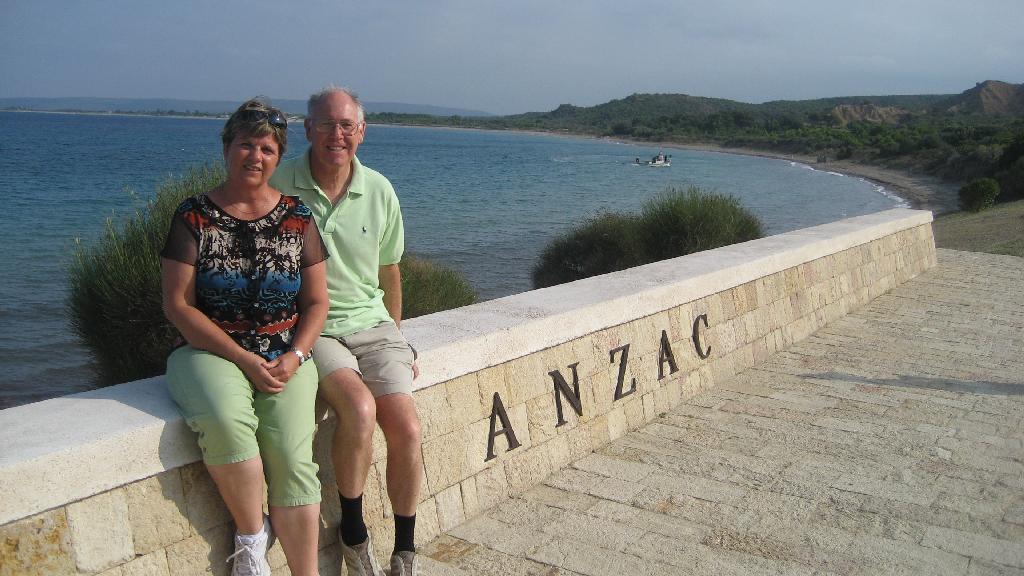

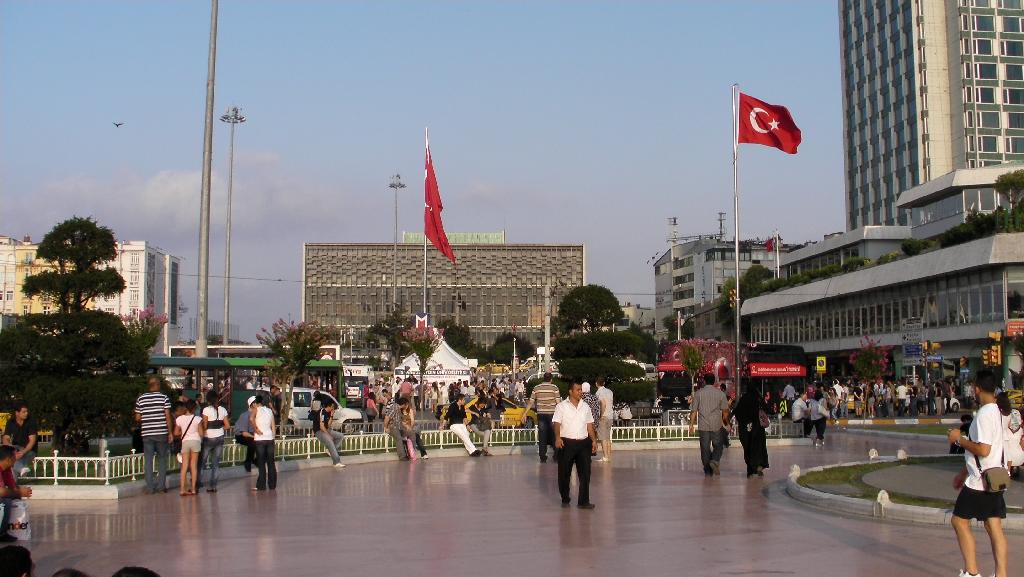
We then returned to the big city of Istanbul and farewelled the tour members and our Tour Director Kemal.
It was a Saturday night and there were countless thousands of people out and about in Aksim Square, close to the hotel.
It was a great tour and we certainly saw some wonderful scenery. Here are the highlights:
- A congenial tour group of Aussies, NZers and the Sharps from Kenya.
- A great tour director in Kemal and a safe driver in Avni.
- Interesting visits to Istanbul, Ataturk memorial, Cappadocia, Hierapolis, Ephesus, Pergamum, Troy and Gallipoli.
- Coping with the heat and with the long days in the bus.
- Learning a lot about the history geography, mythology and agriculture of Turkey.
- Seeing many important historical sites.
- Seeing places where many of the early Christian Churches were situated and appreciating the conditions in which they lived.
- Seeing the farming practices in different places. Turkey grows enormous amounts of corn and sunflowers!
- Experiencing or observing Turkish culture including food, religion, history and approaches to life.
- Interacting with the Turkish people.
